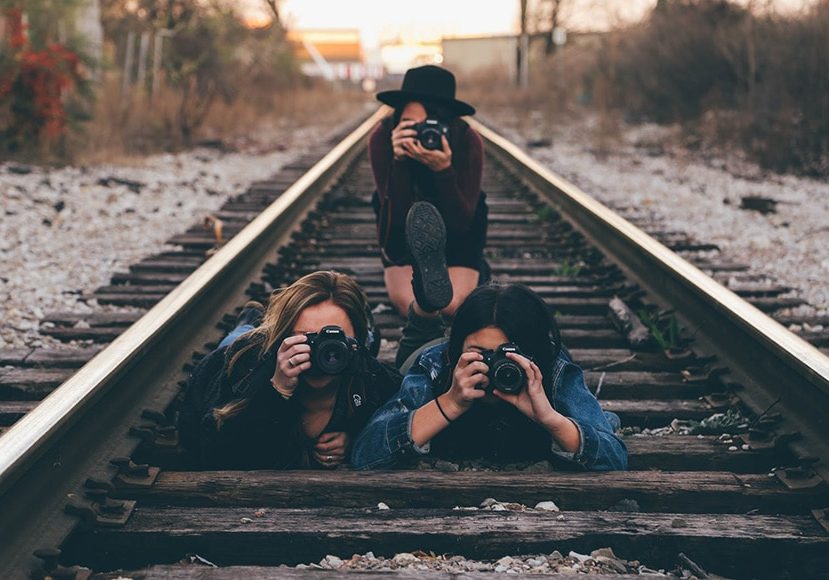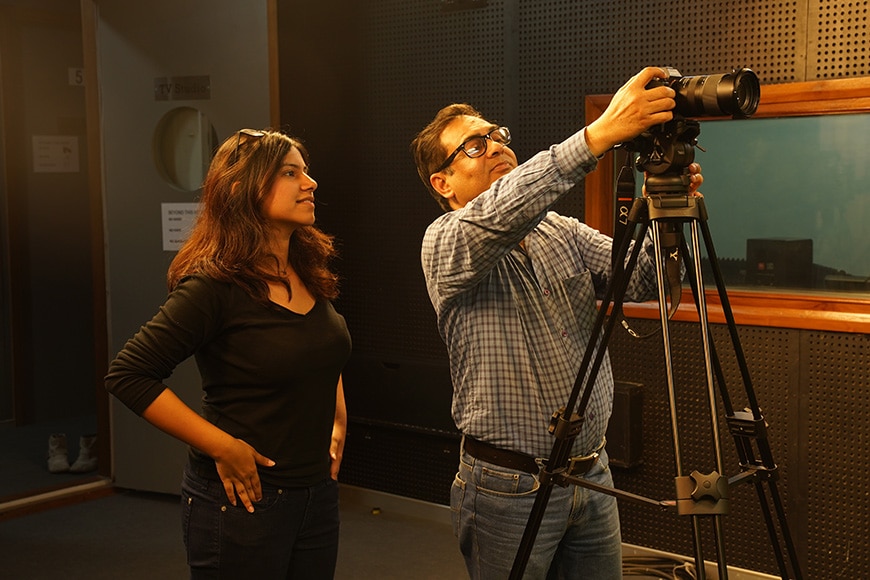
How to Join or Start a Photography Club in 2024
Joining or starting a photography club can be a great way to find motivation, inspiration, and learn more about your craft. Find out how to do it right here.
Learn | Photography Guides | By Andy Day
Joining a photography club can be a great way to find motivation, inspiration, and learn more about your craft.
There is a wealth of photography clubs out there and trying to figure out which one is right for you can be a challenge. This guide should help you figure out how to make a decision.
Alternatively, you might be feeling inspired to create your own photography club and this article will give you a good foundation for getting started.
13 Things to Look for When Joining a Photography Club in 2024
Credit: Ashima PargalPhotography clubs can be incredibly diverse in their interests, structure, and members, so be sure to do your research before you sign up. Here is a list of things to consider before you join.
1. Geography
There are countless online communities that you can join but meeting up in person and sharing knowledge and experiences is fundamental to being part of a photography club.
The first place to start is to figure out what is on your doorstep. If you live in a large city, the chances are that you will be spoilt for choice when it comes to finding a camera club, and you’re more likely to become an active member if you don’t need to travel too far to take part.
If you live somewhere a little more rural, you might need to look a bit further afield and start figuring out which of the nearest clubs is the most accessible in terms of its regular meet-ups.
2. Competitive or non-competitive?
This is very much a personal choice when it comes to becoming an active member of a photography club: do you want to compete against your fellow members on a regular basis?
For some, the idea of competition is a great motivator, giving the push required to create images that you might otherwise never take.
For others, there’s nothing worse than the thought of feeling obliged to put your images up against those of other photographers to then be scrutinised by panels of judges ahead of a verdict as to which one is the best.
For some camera clubs, these competitions are at their core so if competing isn’t for you, steer clear and find one that is geared around something else.
3. Does it have a niche interest?
In cities and regions where there are a number of different clubs, you might find that some specialise in a specific type of photography, such as nature or landscape. If you want to keep your photography fairly narrow, this might be ideal.
By contrast, if you want to broaden your skills and discover other types of photography, you will be best off finding a club that has a diversity of interests.
Rather than joining up with a club that focuses specifically on, say, bird photography, you might want to seek one out that also looks to challenge its members to shoot portraits, architecture, still life, and more.
4. Do you want to go on lots of trips?
Some photography clubs exist to go and explore different parts of the country as a collective. If you’re excited by the prospect of heading off every month to somewhere new, try and find a club that promises lots of travel.
Trips to different regions typically revolve around landscape and street photography. You might head off as a group on a hike up a mountain, or you may spread out across a particular city neighbourhood to document a certain style of architecture.
Wherever you go, experiencing adventures together can be a great way to forge a community.
5. Do you want access to specialist equipment?
Camera clubs may offer members access to dark rooms or specialist printing equipment, or even offer a selection of cameras that can be taken out on loan. Remember that there might be some costs as part of your annual subscription to use this gear.
Typically this is a great learning opportunity with more experienced club members sharing their years of expertise. Whether it’s how to develop film at home, use an enlarger to print from your own negatives, or how to handle a 10×8 field camera complete with bellows and a hood, you can usually be sure to find enthusiastic photographers who are willing to share their knowledge.
Some clubs may have a studio space available, complete with lighting equipment. If you want to learn how to use strobes and softboxes, joining a club can be the ideal place to get started.
6. Do you want to shoot on film?
Until the arrival of the digital era, one of the most compelling reasons to join a photography club was to gain access to a darkroom.
How Much Do You REALLY Know About Photography?! 🤔
Test your photography knowledge with this quick quiz!
See how much you really know about photography...

Developing film is a fiddly process that requires a number of chemicals, as well as a detailed knowledge of how to use them in accordance with some specialist pieces of equipment.
All of that is before you’ve even printed your work which requires more chemicals and an enlarger, not to mention a completely dark room lit only with a red bulb.
Photography clubs often provided all of this to their members and many still keep this tradition, maintaining a passion for analog photography and making the darkroom and all of the equipment available to those keen to teach or learn.
If you’re excited to discover the world of film photography, tracking down the right camera club could be the perfect way to get started.
7. Is it for a specific type of member?
With photography’s growth in popularity, there are more and more clubs created to cater to specific parts of society, such as religious beliefs or sexuality.
With that in mind, you might feel more comfortable immersing yourself in a club of photographers who have shared interests and passions outside of photography.
8. Will there be unexpected costs?
If you’re on a limited budget when it comes to your photographic hobby, it’s worth considering that some clubs might end up costing you more money than you expected.
Beyond annual subscriptions for access to specialist equipment, you might also find yourself covering the cost of printing your work to enter into competitions, or paying to attend the club’s various trips.
9. Do you want to learn from established photographers?
Many clubs invite famous and established photographers to come and give lectures and workshop, and if you’re keen to absorb knowledge from seasoned professionals, seek out a club that has a series of talks lined up.
Often, these will be booked as much as a year in advance so it’s easy to find out who will be coming to speak.
In addition, the more senior members of the club might have years of professional experience behind them and might be a great source for information and tips.
10. Do you want to exhibit regularly?
In addition to field trips and competitions, many camera clubs organise group exhibitions that show off the work of their members.
If you’re keen to display your photos for your friends and family to come and view alongside the work of your fellow members, seek out a club that organises its own exhibitions.
11. Can you attend as a non-member before signing up?
Some clubs allow non-members to attend lectures and meetings, and this can be the perfect opportunity to get a feel for how the organisation operates. Can you envision yourself as an active member and building friendships with others?
A club should feel open and welcoming to new members so this will quickly give you an idea of whether the club is what you are looking for.
12. What is its history?
If you like the idea of becoming a part of a rich tradition, you might be excited to learn that some camera clubs started as far back as the late 19th century.
For example, the Boston Camera Club in Massachusetts was founded in 1881 and still meets every Tuesday from September through to June.
Joining a camera club might be an opportunity to play a small role in a history that reaches back more than 140 years.
13. Does it have a website or Facebook group?
More established camera clubs will typically have a dedicated website but many organisations — particularly those that are smaller — will focus around a Facebook group as it’s a platform that is easier to update and encourage participation.
There might also be an Instagram or Flickr profile where the club shares its member’s work.
All of these will give you an idea of how active the club is, and where its interests lie. It can also be a good place to make contact and get an idea of how welcoming its members are.
How to Start a Photography Club in 2024

Credit: Clem Onojeghuo
Setting up your own camera club could be the start of something exciting. Here are some tips on how to get yourself up and running.
- Check what else is in your area
Photography clubs tend to be regional or specific to a city, so it’s worth checking if there are clubs already in existence in your area.
If there’s already a club close to you and you’re determined to set up your own, it’s probably worth trying to offer members something that is distinctive and different rather.
- Find members
This might seem as though you are putting the cart before the horse, but having a small team of members who are as enthusiastic as you are will speed up the process immensely.
You’ll be able to draw on more enthusiasm and knowledge from a core team rather than going through this process alone, making it quicker, more efficient, and more likely to discover opportunities.
- Put the word out on social media
Most cities and even many neighbourhoods have online photography groups where people can share photos and advice, and these can be the perfect online communities to tap into when you’re trying to gather members to your new club.
Be friendly and invite people to take part in its creation and it’s likely that you’ll attract people who are keen to help to get the club up and running.
- Try MeetUp.com or similar
Meetup is a great way to organise gatherings and you will increase your chances of people stumbling upon your club without them even realising that your new group is just what they’ve been looking for.
- Advertise locally
The local corner shop, post office, or supermarket may have a noticeboard that’s the perfect place to put a poster advertising the creation of your new club.
As mentioned, you don’t need to be set up with a roster of visiting speakers and a schedule of workshops to justify advertising the existence of your club; just let people know that it’s in its early stages and that you’re looking for enthusiastic members to help it to grow.
- Find a venue
Finding a venue can be one of the most challenging parts of setting up a camera club, so it’s best to keep your expectations low and your needs simple.
A pub’s backroom might be enough to get you started; having a geographic base instantly creates a sense of community and stability, and with more members, you will have more ideas of where to go next once you’ve outgrown your first home.
Furthermore, with more members, you will soon be able to charge fees and gather together enough cash to hire a room that’s more suited to your needs.
Be sure to check out libraries, galleries, museums, local schools — any of these may have a space that’s available, and some might be interested in sponsoring your club.
Final Words
Being part of a photography club can be a great way to learn and develop as a photographer, as well as building friendships with likeminded people.
It’s worth doing your research to find the camera club that best suits you and your needs, so hopefully, this article will act as a good foundation.
If you have suggestions or some questions, be sure to leave a comment below. Good luck!

Check out these 8 essential tools to help you succeed as a professional photographer.
Includes limited-time discounts.














